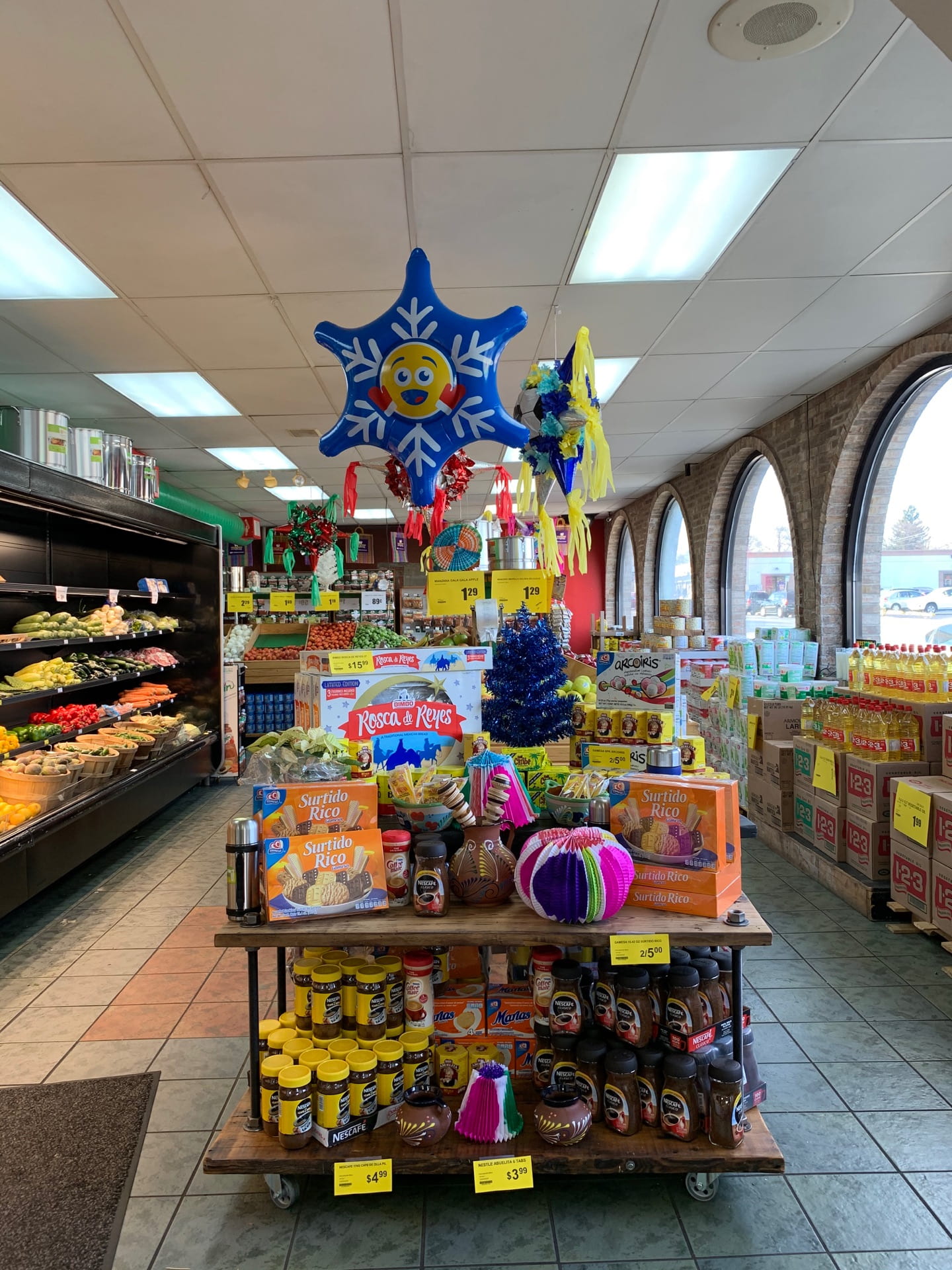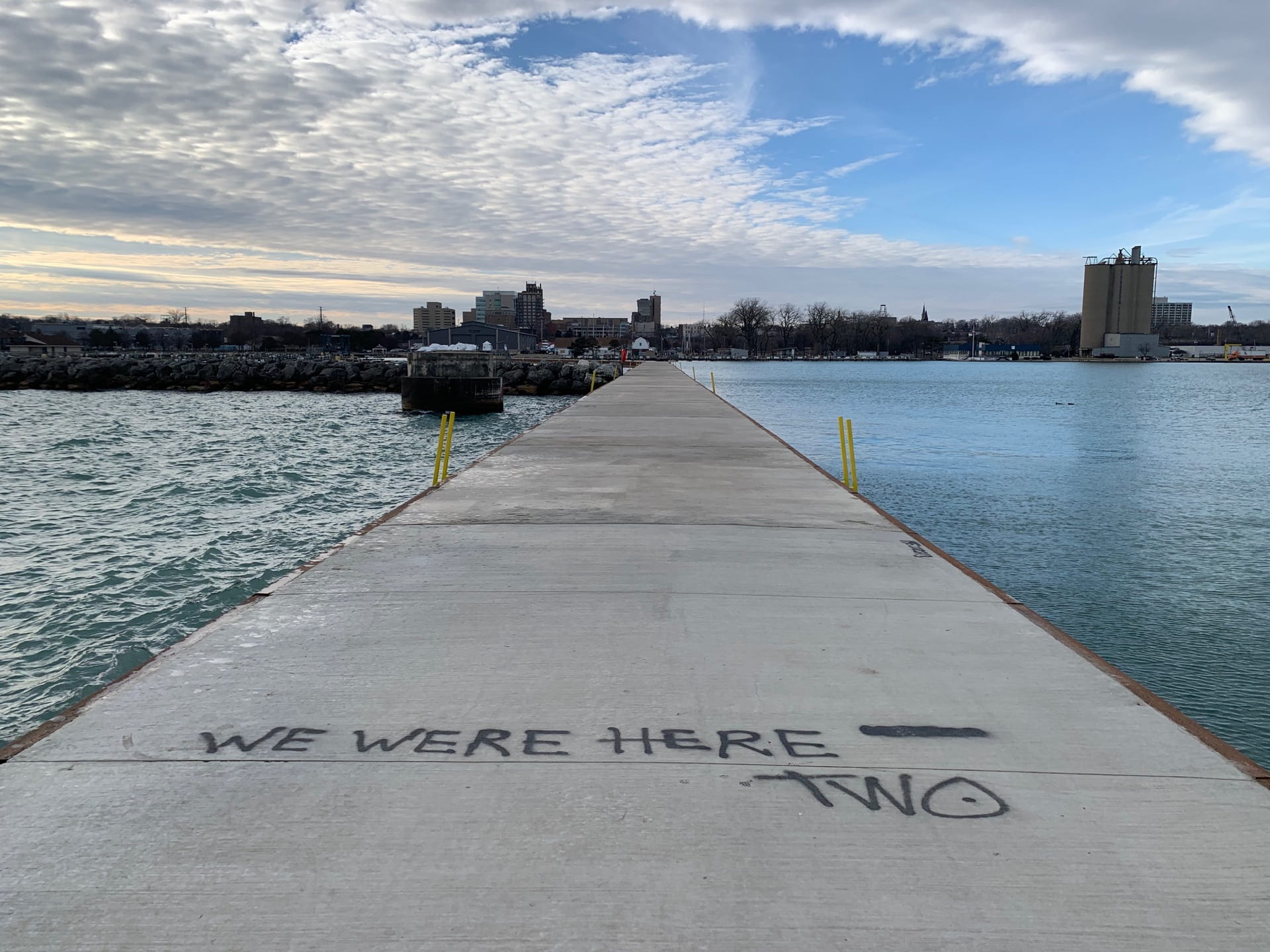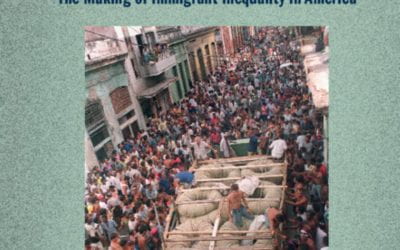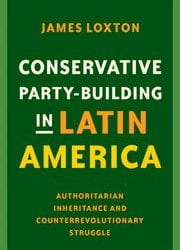Latinx Im/mobilities
Mexican and Mexican American Navigation in El Paso, Texas, and Waukegan, Illinois
An elderly Mexican American grandmother’s trek to the supermarket cut short due to fear of contagion, which in turn, has affected her diabetes. Young adult Armando worries that his mixed-status Mexican family, who are essential workers, will contract the disease or face deportation. DACA recipient Guillermo recalls that the global pandemic has deepened conditions of impoverishment for undocumented Latinxs. Alas, the Covid-19 pandemic has affected the mobility practices—how people get around— of working-class U.S. Latinx communities, both citizen and not.
We want to explore the pandemic geographies of two cities: El Paso, Texas, and Waukegan, Illinois, focusing on how Latinxs must move through space for purposes of social reproduction and labor. These two cities are home to large Latinx, and Mexican/Mexican American populations, one at the nation’s border and the other within the country’s interior landscape. While El Paso has historically received multiple waves of Mexican migration: after 1848, the building of the railroad by the 1880s, and served as refuge sites during and following the Mexican Revolution, Waukegan too has emerged as a location of Mexican migration after 1985. We examine case studies of im/mobility for working-class and/or undocumented Latinx individuals whose mobility practices in the everyday have been placed in often precarious and dangerous situations, which Covid-19 has exacerbated. Our goal is to make visible how an analysis on the spatiality of Latinx communities helps us understand the varying degrees of mobility of this demographic before and during the pandemic.
El Paso, Walmart and Healthcare
Although central Texan cities such as Austin and San Antonio host H-E-Bs—popular supermarkets that contain products catering to the region’s diverse Latinx demographic—the chain has not yet reached a substantial presence in Texas’s westernmost city. Instead, Walmart stores dot the landscape in El Paso, a city of 700,000. Mexicans from the Ciudad Juárez, Chihuahua, with its 1.5 million residents, also frequent the stores. The Walmart located near Cielo Vista Mall is conveniently located close to the U.S.-Mexico border, and is a part of a large tract of superstores that include Cielo Vista Mall and the more recent Fountains of Farah. Even though numerous Walgreens and small tiendas mark the city’s built environment, many travel to the Cielo Vista Walmart due to its location near the bus station center. Others shop at this particular store because it features a large selection of “cosas para cocinar,” remarks El Pasoan Emma Salcido, a 78-year-old Mexican American grandmother. Raised in the city’s Segundo Barrio (second ward), Salcido, who now lives near the University of Texas-El Paso, used public bus transit to shop at the Cielo Vista Walmart Supercenter for years.

Emma Salcido, by Kris Klein Hernández
As an older widow on Medicaid with type II diabetes, Salcido found the trek from her government-assisted housing to the bus stop an easy one. “The bus, crowded, was helpful to take across the city to the east side with it stopping at Cielo Vista Walmart’s doors,” she recalled. She would make her two-and-a-half-hours trek biweekly and found that many other women in her demographic also took the bus to shop. Salcido could make the trip in fifteen minutes if she had access to a private vehicle, illustrating an issue of transit equity. Salcido was not alone in her opinion of the store; some of her sisters who lived in central and west El Paso would travel with Salcido to procure groceries and medications at the Cielo Vista location. Although there existed numerous Walmart locations, Cielo Vista provided an experience beyond the material; the site perhaps sustained Latinx social shopping communities.
Two tragic events—one local in 2019 and one global in 2020—would deeply alter the way Salcido, and others like her, navigate space and violence in the borderlands. A little past 10 a.m. Mountain Standard Time on Saturday, August 3, 2019, Tara Law and Josiah Bates from TIME reported that 21-year-old Allen, Texas, native Patrick Crusius drove nearly “650 miles” from Dallas to east El Paso, murdered over twenty people, and injured over twenty-six others in the Walmart Supercenter next to the Cielo Vista mall. The drive from Dallas to El Paso is a long nine hours. Crusius made his trek to El Paso with his weapon of choice: an assault-style rifle. Michael S. Rosenwald and others from The Washington Post reported that six Mexican nationals were wounded, “including a 10 year old girl.” A primary consumer demographic that enters Cielo Vista’s doors is ethnic Mexican: Mexican Americans and Mexican nationals. East El Paso, which many Mexican nationals and Mexican Americans call home, is also known for sustaining a deep Juarense culture. Due to concerns about her safety at the hands of vigilante violence, Salcido decided that she would only travel to the Walmart with family and friends following the massacre.

Walmart Memorial of El Paso shooting, by Kris Klein Hernández
Salcido’s journey to and from Walmart would further alter by mid-March 2020, when the Covid-19 pandemic shook the world. Salcido decided to abandon her biweekly trek to Walmart altogether. The lack of knowledge regarding the virus made the grandmother question her safety. While Salcido found her travel to and from Walmart time-consuming, it was helpful for her to be mobile and exercise on foot to combat the effects from diabetes. With the pandemic, Salcido lost her mobility. As a result, her arthritis worsened. In a July 2021 phone call with the older widow, I asked what could be done to help ease her mind and safety, allowing her to resume her routine. Salcido replied that “without vacunas, masks, and someone helping me, no vale la pena.”
Precarious Workers and Residents in Waukegan
Since the second half of the 20th century, Waukegan, Illinois, has served as a migration point for many migrants from Mexico specifically and Central America generally. Located alongside Lake Michigan, this post-industrial satellite city has previously enacted xenophobic policies aimed at managing the movements and flows of Latinx migrants. Armando (his last name is not used to protect his privacy), is in his mid-20s, is Latino and a U.S. citizen to undocumented Mexican residents. He comments that downtown Waukegan “is a place I associate with racism and xenophobia” because of an “anti-immigrant law” in 2007 that spurred Latinx residents to mobilize against the 287(g) proposal with Immigration and Customs Enforcement (ICE) through marches, demonstrations and a boycott. The local government’s approach to undocumented residents shaped the affected migrants’ mobility practices. Additionally, the region relies on personal vehicles, rather than public transportation, to get around. Some residents can’t afford t own cars within the context of labor exploitation and debt, and Latinxs often have long commute times either in personal vehicle or public transit. Undocumented residents have had to navigate various barriers to their mobility, such as a lack of a driver’s license, automatic towing ordinances for driving without a license and a structure of fear that makes being in public spaces feel that much more dangerous.

‘Opportunity Here’ Waukegan Mural on side of a building, by Edgar Sandoval
During the Covid-19 pandemic, many workers now deemed essential in the Chicagoland area had to live and work almost as if life were business-as-usual. Many Latinxs, migrants and undocumented residents had no other choice but to continue working. Jennifer Smith writes in the April 3, 2020, edition of the Wall Street Journal that demand for warehouse workers surged nationwide, and the Chicagoland area was no exception. Many of these workers are not counted as they are employed through temporary staffing agencies and have been treated as disposable. Some of these workers are undocumented Latinx migrants who are unable to apply to other positions due to the widespread use of E-Verify, a Department of Homeland Security website that allows enrolled employers to verify the legal eligibility of employees to work in the United States. As such, these vulnerable workers must move to and from their place of employment as they negotiate the risk of exposure to Covid-19 due to workplace negligence and a lack of access to PPE. Other workers are employed in local businesses in Waukegan, some of which are immigrant-owned. Many employees procure their own masks, with some workers making masks and distributing them to neighbors at no cost. While many people were able to socially distance, work from home and quarantine, these workers often had to leave the safety of their homes to traverse spaces that may expose them to Covid-19.

Latinx Grocery Store in Waukegan with produce, sweet treats and ballons, by Edgar Sandoval
Many undocumented residents were acutely aware of their mobility prior to Covid-19 and drew on their past experiences throughout the pandemic. Fears of family separation through deportation meant that undocumented people and their loved ones had developed strategies to survive and move through public space. One of them was the tactic of staying in-place, or immobility, with undocumented migrants remaining at their places of residence unless necessary due to concerns about ICE raids in public. Guillermo (last name withheld for privacy concerns) is a friend who is enrolled in Deferred Action for Childhood Arrivals (DACA). In a conversation, he stated that he had lived the “quarantine lifestyle before the pandemic.” Immobility for safety’s sake has been an existing practice for undocumented populations attempting to avoid state-sanctioned violence. While much has changed for Waukegan’s residents, some aspects of everyday life under a pandemic had been a continuation of survival practices developed around fears of deportation.

Waukegan Pier and Harbor with “We were here—two” spray-painted on the path, by Edgar Sandoval
Resuscitating Latinx Mobilities
Covid-19 has deeply affected the ways in which some Latinxs navigate through space for purposes of social reproduction and labor. The stories of Salcido, Armando and Guillermo highlight the range of inequities Latinxs face— from fear of contagion to white supremacist violence to deportation and death. Salcido no longer leaves her apartment for fear of the pandemic but also due to the white supremacist violence enacted at her supermarket. Yet, as we have shown, several of these constraints existed prior to the pandemic. Latinxs, migrants and undocumented residents had to continue to navigate under intensified conditions of restricted mobility. Many already had developed spatial strategies to remain safe against deportations in public and now exposure to Covid-19.
Bringing attention to Latinxs’ mobility (their movements and flows in space) illuminates the various ways that the pandemic has altered life for residents. While Latinx mobility fluctuated in a capacity prior (due to fears of state-sanctioned and extralegal violence, i.e. deportation and murder at the hands of white supremacists), the pandemic exacerbated these constraints, and therein have at times, immobilized movement for individuals like Salcido. Contemporary and future studies of Latinxs must account then for the varying degrees of mobility that comprise the diverse demographic of Latinxs.
Kris Klein Hernández, Ph.D., is a postdoctoral fellow in the Charles Warren Center and Lecturer on History at Harvard University.
Edgar Sandoval, Ph.D., is a Gaius Bolin Fellow and incoming Assistant Professor of Latina/o Studies at Williams College.
Related Articles
A Review of Cuban Privilege: the Making of Immigrant Inequality in America by Susan Eckstein
If anyone had any doubts that Cubans were treated exceptionally well by the United States immigration and welfare authorities, relative to other immigrant groups and even relative to …
A Review of Conservative Party-Building in Latin America: Authoritarian Inheritance and Counterrevolutionary Struggle
James Loxton’s Conservative Party-Building in Latin America: Authoritarian Inheritance and Counterrevolutionary Struggle makes very important, original contributions to the study of…
Endnote – Eyes on COVID-19
Endnote A Continuing SagaIt’s not over yet. Covid (we’ll drop the -19 going forward) is still causing deaths and serious illness in Latin America and the Caribbean, as elsewhere. One out of every four Covid deaths in the world has taken place in Latin America,...



